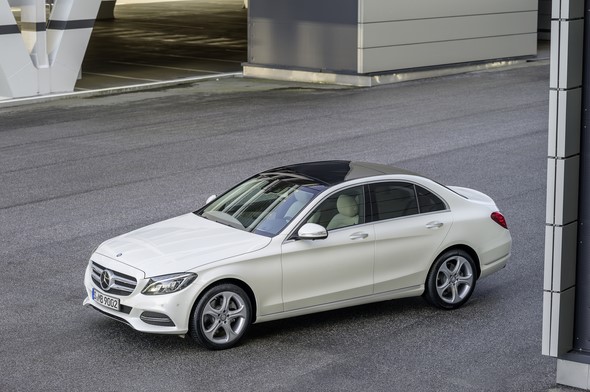TÜV Environmental Certificate


The new C-Class makes its mark with an exemplary life cycle assessment
Stuttgart – The C-Class sets efficiency benchmarks for its class, helped by an intelligent lightweight concept, excellent aerodynamics and new, frugal engines.
The neutral inspectors from the TÜV Süd technical inspection authority have confirmed the high level of environmental compatibility of the new Mercedes-Benz C-Class.
Besides a sensuous, clean-cut design, a top-class interior and a host of technical innovations, the premium saloon also boasts an exemplary life cycle assessment, which is why it has been awarded the Environmental Certificate in accordance with the ISO 14062 standard.
Professor Dr. Herbert Kohler, Chief Environmental Officer at Daimler AG: “Our engineers have pulled out all the stops in an effort to lower fuel consumption while at the same time further accentuating the car’s sporty character.
By employing an intelligent lightweight design with a high proportion of aluminium, for example, it has been possible to make the new C-Class up to 100 kilograms lighter than its predecessor.
This means the mass that has to be accelerated and braked is lower, reducing fuel consumption and emissions while at the same time making the saloon more agile.”
This has resulted in the new C-Class being awarded the Environmental Certificate by the neutral inspectors from TÜV Süd in recognition of the exemplary results achieved in its life cycle assessment.

Over the course of its entire life cycle – from its manufacture through 200,000 kilometres of driving to its recycling – the new Mercedes-Benz C-Class produces around 10 percent fewer CO2 emissions than its predecessor at the time of its market exit (compared to the time of its launch in 2007 the improvement is much higher, at around 28 percent).
A low drag is also crucial to achieving such outstanding efficiency. With a Cd value of 0.24 for the C 220 BlueTEC BlueEFFICIENCY Edition, the new C-Class Saloon sets a new benchmark in the medium-size category.
The wind noise level, which was already very low in the preceding generation of the C-Class, has been lowered further still.

And although any thought of recycling may be a long way off at first in the case of a brand new model, the engineers have nevertheless given careful consideration to this process.
Consequently, not only does the new C-Class achieve the recycling rate of 95 percent by weight; it also closes many material loops. In total, 52 components in the new saloon with a combined proportionate weight of 49.3 kilograms are made from high-quality recycled plastics.
This means that the mass of components made from recycled materials has been increased by 23 percent compared to the outgoing model.
What’s more, 76 components in the new C-Class with a combined weight of 26.3 kilograms are manufactured using natural materials. This represents an increase of 55 percent compared to its predecessor.





